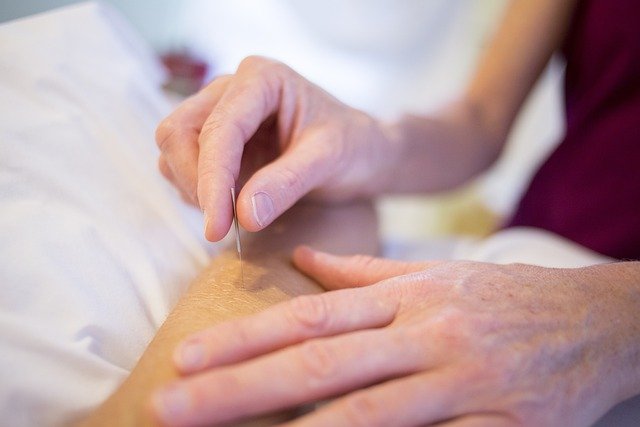Psoriatic Arthritis Treatment Options and Management Strategies
Experiencing joint pain along with psoriasis? Learn about psoriatic arthritis, a condition where skin and joint issues connect. Explore symptoms, potential complications, and care strategies that help manage discomfort while supporting mobility and overall health.

Psoriatic arthritis represents a complex autoimmune condition that demands careful medical attention and personalized treatment strategies. Unlike other forms of arthritis, this condition uniquely combines joint inflammation with the skin manifestations of psoriasis, creating distinct challenges for both patients and healthcare providers.
The treatment landscape for psoriatic arthritis has evolved significantly over the past decade, offering patients more targeted and effective options than ever before. Modern approaches focus on controlling inflammation, preventing joint damage, and managing associated symptoms through a combination of medications, lifestyle modifications, and supportive therapies.
Early Signs Of Psoriatic Arthritis To Watch For
Recognizing the initial symptoms of psoriatic arthritis can significantly impact treatment outcomes and long-term prognosis. The condition often develops gradually, with joint pain and stiffness appearing months or even years after psoriasis symptoms first emerge.
Common early indicators include morning stiffness lasting more than 30 minutes, swelling in fingers and toes that gives them a sausage-like appearance, and pain in the lower back or neck. Many patients also experience fatigue, nail changes such as pitting or separation from the nail bed, and eye inflammation. Joint pain typically affects multiple areas simultaneously, including the spine, hands, feet, and larger joints like knees and hips.
Prompt recognition of these symptoms allows for earlier intervention, which can prevent irreversible joint damage and improve long-term outcomes. Healthcare providers emphasize the importance of seeking medical evaluation when these signs appear, particularly in individuals with existing psoriasis.
How Psoriasis Can Lead To Joint Pain And Arthritis
The connection between psoriasis and joint inflammation stems from shared inflammatory pathways within the immune system. In psoriatic arthritis, the body’s immune response mistakenly attacks healthy joint tissue, cartilage, and surrounding structures, similar to how it affects skin cells in psoriasis.
Research indicates that certain inflammatory proteins, particularly tumor necrosis factor-alpha and interleukin-17, play crucial roles in both skin and joint manifestations. These proteins trigger cascades of inflammation that can affect multiple body systems simultaneously, explaining why patients often experience both skin and joint symptoms.
Genetic factors also contribute significantly to this progression. Individuals with specific genetic markers, particularly HLA-B27, face higher risks of developing joint involvement. Environmental triggers such as infections, stress, or physical trauma can activate these inflammatory pathways in genetically susceptible individuals, leading to the development of arthritis symptoms.
Psoriatic Arthritis Risk Factors And Prevention Tips
Several modifiable and non-modifiable factors influence the likelihood of developing psoriatic arthritis. Understanding these risk factors enables individuals to take proactive steps in prevention and early management.
Non-modifiable risk factors include genetic predisposition, family history of psoriasis or psoriatic arthritis, and certain ethnic backgrounds. Age also plays a role, with most cases developing between ages 30 and 50, though the condition can occur at any age.
Modifiable risk factors offer opportunities for prevention and management. Maintaining a healthy weight reduces stress on joints and may decrease inflammation levels. Regular exercise helps preserve joint function and flexibility while supporting overall immune system health. Stress management through meditation, adequate sleep, and relaxation techniques can help prevent flare-ups.
Avoiding known triggers such as infections, skin injuries, and certain medications can also reduce risk. Individuals with psoriasis should work closely with dermatologists to maintain optimal skin health, as better psoriasis control may reduce the likelihood of joint involvement.
Medication Options and Treatment Approaches
Contemporary treatment strategies for psoriatic arthritis employ a stepped approach, beginning with conventional medications and progressing to more advanced therapies as needed. Disease-modifying antirheumatic drugs (DMARDs) form the foundation of treatment, with methotrexate being the most commonly prescribed first-line option.
Biologic medications represent a significant advancement in psoriatic arthritis treatment. These targeted therapies work by blocking specific inflammatory pathways, offering superior efficacy for many patients. TNF inhibitors, IL-17 inhibitors, and IL-23 inhibitors each target different aspects of the inflammatory process, allowing for personalized treatment selection based on individual patient characteristics.
Topical treatments continue to play important roles in managing skin symptoms, while corticosteroid injections can provide targeted relief for severely affected joints. Physical therapy and occupational therapy complement medical treatments by helping patients maintain joint function and adapt daily activities as needed.
| Treatment Category | Examples | Estimated Monthly Cost | Key Benefits |
|---|---|---|---|
| Conventional DMARDs | Methotrexate, Sulfasalazine | $50-200 | Proven efficacy, oral administration |
| Biologic DMARDs | Adalimumab, Etanercept | $3,000-6,000 | Targeted action, superior outcomes |
| JAK Inhibitors | Tofacitinib, Upadacitinib | $4,000-5,500 | Oral convenience, rapid onset |
| Topical Treatments | Corticosteroids, Vitamin D analogs | $100-300 | Direct skin application, minimal systemic effects |
Prices, rates, or cost estimates mentioned in this article are based on the latest available information but may change over time. Independent research is advised before making financial decisions.
Lifestyle Modifications and Supportive Care
Beyond medical treatments, lifestyle modifications play crucial roles in managing psoriatic arthritis effectively. Dietary approaches, particularly anti-inflammatory diets rich in omega-3 fatty acids, may help reduce systemic inflammation and support treatment outcomes.
Regular low-impact exercise, including swimming, cycling, and yoga, helps maintain joint flexibility and muscle strength while minimizing stress on affected joints. Weight management becomes particularly important, as excess weight increases mechanical stress on joints and may worsen inflammation.
Stress reduction techniques, adequate sleep hygiene, and smoking cessation all contribute to better disease management. Many patients benefit from support groups and educational resources that help them navigate the challenges of living with a chronic condition.
Psoriatic arthritis treatment requires a comprehensive, individualized approach that addresses both joint and skin manifestations. With proper medical care, lifestyle modifications, and patient education, most individuals can achieve significant symptom control and maintain active, fulfilling lives. Regular monitoring and treatment adjustments ensure optimal outcomes while minimizing potential side effects from medications.




